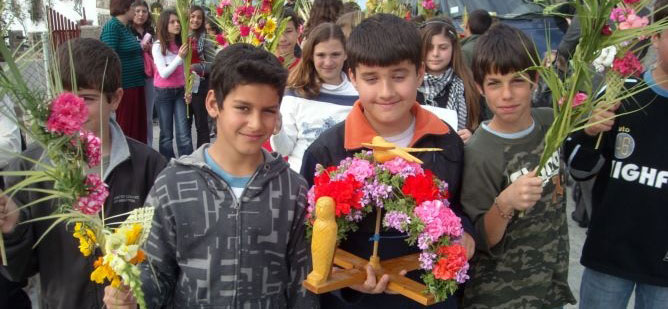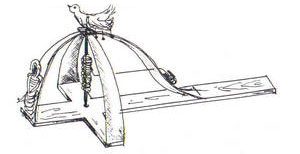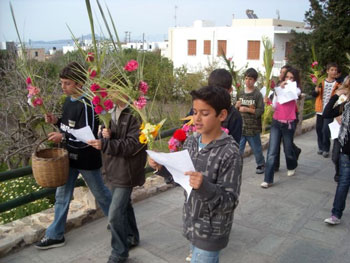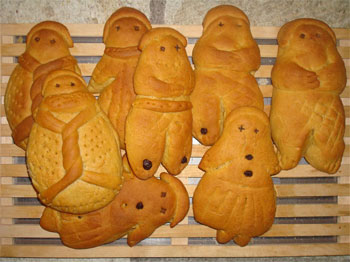The kalandira custom in Nisyros

The kalndira custom known as ìthe wondering of the kalandiraî in Nisyros island, is related to Lazarus Saturday. (Lazarus Saturday is named like that because Jesus Christ resurrected his friend Lazarus on that day. It was the day before Jesus Christís entry in Jerusalem city, known as Palm Sanday.)
On that day, Nisyrian people, even those who donít live on this island any more, arrive in it to celebrate this custom singing traditional songs and tasting the ìlazarakiaî (stuffed pastries in Lazarus shape).

Children pass round the kalandira, a wooden object composed of two flexible and arc shaped crossed pieces. There is a bird simulacrum on the top put on a vertical axis that rotates aided by a string. Kalandira is decorated with flowers.
The children start preparing their ìequipmentî for this celebration many days in advance. They cut green phoenix tree branches and they put them in the water to make their leaves soft, in order them not to break while being folded. They use them and some flowers to create small bouquets, called ìvagiaî. On Lazarus Saturday morning, they start their round passing the village following their teachers and holding a vagia each one. They also sing a poem that narrates Lazarusís resurrection. Older children follow a different route from one house to another, leaded by the kalandira carrier and chanting a motet about Jesus Christís resurrection. The housewives put eggs and small traditional pastries in the childrenís basket and money on their tray. The eggs are for the teachers, the pastries for the children and the money for the school fund.


When the younger children come across the kalandira group, they sing a song which talks about it. When they depart, they go on singing their poem. After having passed round the entire village they arrive at the school where the teachers offer the children a delight and then they go home.
This custom has been being celebrated since ancestry and some versions of it can be found in most of the Greek villages or towns.





